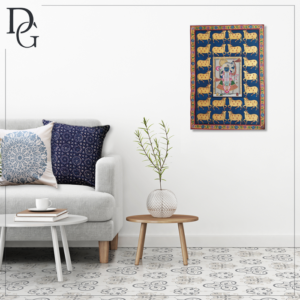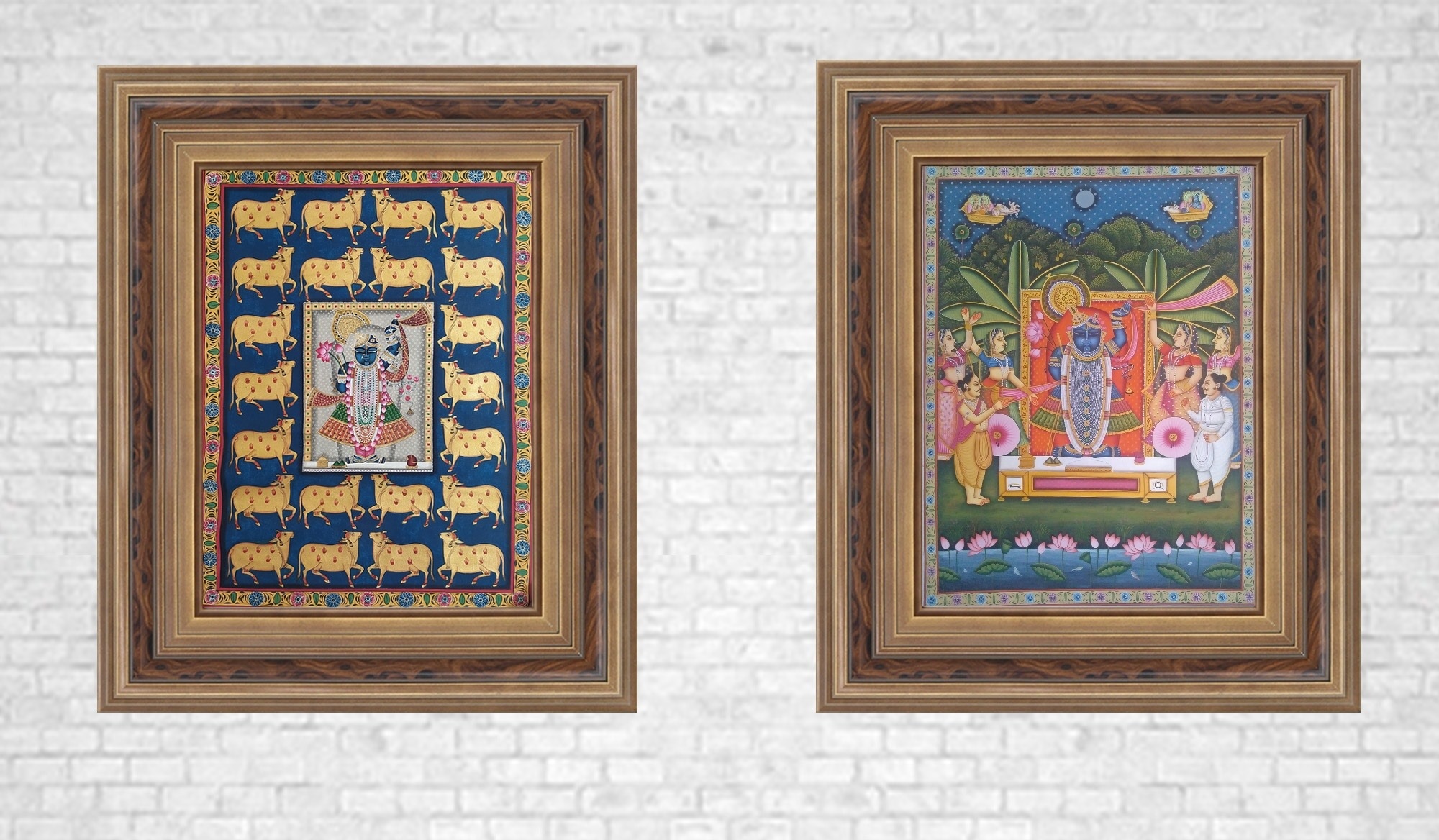Understanding the Origins of Pichwai
Pichwai (Pichhvai) art started in the temple town of Nathdwara near Udaipur (Rajasthan) style of that dates back around 400 years. Because these artworks are hung literally “piche” or behind the temple god, and “wai” literally meaning a cloth hanging, the word “Pichwai” was coined. They are manufactured by followers of Shri Vallabhac’s PushtiMarg sect.
Pichwai’s Unique Qualities
Pichwai artists create work that is delicate, detailed, and visually appealing. Artists employ brushes made from goat tail hair, coconut shells to store colours, tamarind twig charcoal, and other materials. The Pichwai colour palette consists of red, gold, and stone tones. It takes several months and a great deal of talent for a Pichwai artist to create an authentic work of art.

Pichwai art was first created to embellish Shrinathji’s (Shrinathjiki Haveli) temple in Nathdwara and was used for story-telling in villages. It is now found in temples throughout the region and is purchased by art collectors and devotees for display in their homes and home temples.
Themes in Pichwai Art
Lord Krishna’s life is depicted in Pichwai wall hangings or Pichwai paintings on cloth or paper. Lord Krishna as Shrinathji, Krishna’s RasLeela with the Gopis, Radha-Krishna, cows, and lotus petals are all popular subjects. Festivals such as Diwali, Holi, Janmashtami, Gopashtami, NandMahotsav, SharadPurnima, Annakoot, or Govardhan Puja are other popular themes.


























